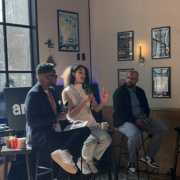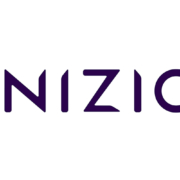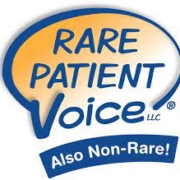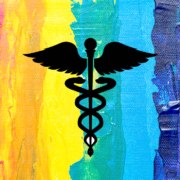Marketing in Cell and Gene Therapy: How to stand out from the crowd
Marketing in Cell and Gene Therapy: How to stand out from the crowd
By Ben Beckley
With technologies rapidly diversifying and cell and gene therapies (C>s) gaining recognition among patient groups as treatments with immense curative potential, there are clear opportunities for marketers to differentiate from existing, often palliative, approaches to care.
In this article, Ben Beckley, President at Evoke Mind+Matter, an Inizio company, explores why it’s more important than ever to stand out in the market and looks at some of the opportunities on the horizon for C> developers.
Communication under the spotlight in the C> space
Patients with long-term chronic diseases are typically more familiar with their specific therapy and disease than any other party involved in their healthcare and are usually up to speed on clinical trial successes and breakthroughs. It’s also becoming more mainstream for patients to think there could at some point be a C> developed for their disease. There remains, however, a mix of skepticism and cautious optimism among patients and some physicians – with many seeking real world data to inform their decisions around new therapies. Complicating this further, patients in the C> space require more nuanced and personalized communication than with any other technology.
Meta analyses have shown that the acceptability of advanced therapy medicinal products varies significantly depending on patient demographics, understanding of the treatment, the severity of the disease and the availability and efficacy of existing treatments.[1]
Even where a C> has curative potential, it’s not uncommon for a patient to say: “I don’t want to die from this, I’m already on a therapy that works well enough.”
The analysis mentioned above found that disease severity and type had a direct impact on a patient’s acceptance of gene therapies. The data shows that more support was found for somatic therapy of fatal and debilitating diseases over less severe diseases and large proportions of respondents were accepting of gene therapy for complex and potentially severe diseases, however, this reduced with decreasing disease severity.[1]
When it comes to alternative treatment, a cohort of 16 Cystic Fibrosis patients, all indicated that they preferred gene therapy to conventional heart and lung transplantation. Oncology staff similarly deemed gene therapy (48.9%) to be a safer cancer treatment option than chemotherapy (7%), with patients (26.7%) also agreeing that gene therapy was safer than chemotherapy (6.7%, with 66.7% neutral).[1]
Where this analysis fails however is in incorporating the different experiences of patients with rare diseases. For pharma, the requirement is simple to articulate but difficult to deliver. More time and targeted approaches are required to engage with and understand patient highly distinct sets of concerns and wants when it comes to C>s.
Staying with the community
There is also a vital opportunity for differentiation when it comes to engaging with patients following successful treatment. There is a strong sense of community for patients with rare diseases, some perceive that if they are ‘cured’ they can no longer identify with that community. For some patients, especially those who have been engaging with healthcare and treatments from a very young age which is often the case with genetic disorders, much of their life has revolved around managing their disease. If they no longer have it, their whole life changes so they require support throughout this transition. Mandates are in place to ensure patients are monitored post-treatment (the FDA requires gene therapy patients to be followed for 15 years), and these follow-up appointments provide an ideal opportunity for pharma to engage and offer more holistic support.
Advocacy is another route that pharma companies can leverage to keep patients engaged in their communities. Companies need to ensure the patient knows they have contributed greatly to the success of a C> – as mentioned above, many patients and HCPs are waiting for real world data to inform their decisions – the first patients to undergo the treatment are pioneers who provide that data. Engaging them as advocates, whether by using their insights to collaborate and inform future trials or as patient ambassadors will keep them connected to a community they have been a part of for years.
Influencer marketing and advocacy
Every company in the world has become ‘more’ digital – pharma specifically has made great strides in recent years in embracing omnichannel approaches to patient engagement. The COVID-19 pandemic has proven to be a real engine for change in this area – research from Imperial College London’s Institute of Global Health Innovation found that 21% of the healthcare organizations surveyed had introduced digital chronic disease management tools during the pandemic.[2]
With this digital foundation in place – the question for pharma is where next?
There are two avenues of opportunity for healthcare companies that are currently untapped: influencer marketing and advocacy.
Pharma does a great job in scientific and healthcare communications but there is room for improvement in the patient advocacy element which is less about one-way communication and more about building community and resources.
We need to understand what patients want to communicate so they can better explain their condition within their personal communities (i.e. schoolteachers, non-specialist healthcare) and allow them to amplify awareness for their disease outside of their support system.
Naturally following on from advocacy is the role of influencers. There is a new demographic of patients emerging – those who have embraced TikTok. We’re seeing it being used by patients as a platform to amplify awareness and understanding of their disease. These influencers are powerful advocates not only of their patient communities but also of the incredible work that healthcare does to manage and treat their conditions. Facilitating positive discussions around C>s on this platform will be invaluable to their acceptance and success.
For pharma though it means understanding a new way of communicating. The challenge is how to prevent the ‘wrong’ messages being shared, how to access the right influencers at the right time, and how to sensitively engage with the communities using the platform.
Summary
The industry needs to meet patients in the middle when it comes to communicating around advanced therapies – acknowledging each patient’s existing knowledge of their disease and the nuances and complexity of engaging their demographic to articulate carefully and considerately what a C> means to them.
The new wave of social platforms is an untapped part of healthcare digitization and biotech must understand how to successfully pivot patient engagement strategies to incorporate advocacy and influencer marketing to truly differentiate their communication efforts.
[1] https://www.liebertpub.com/doi/10.1089/hum.2019.197
[2] https://www.ey.com/en_uk/government-public-sector/embracing-digital-is-covid-19-the-catalyst-for-lasting-change












